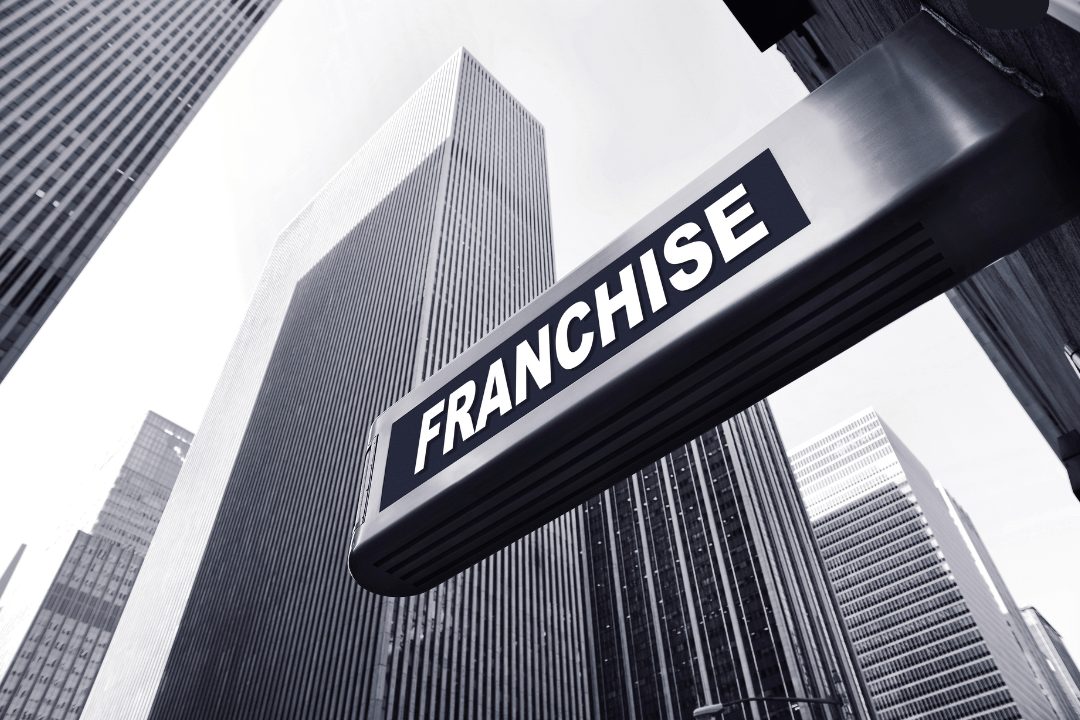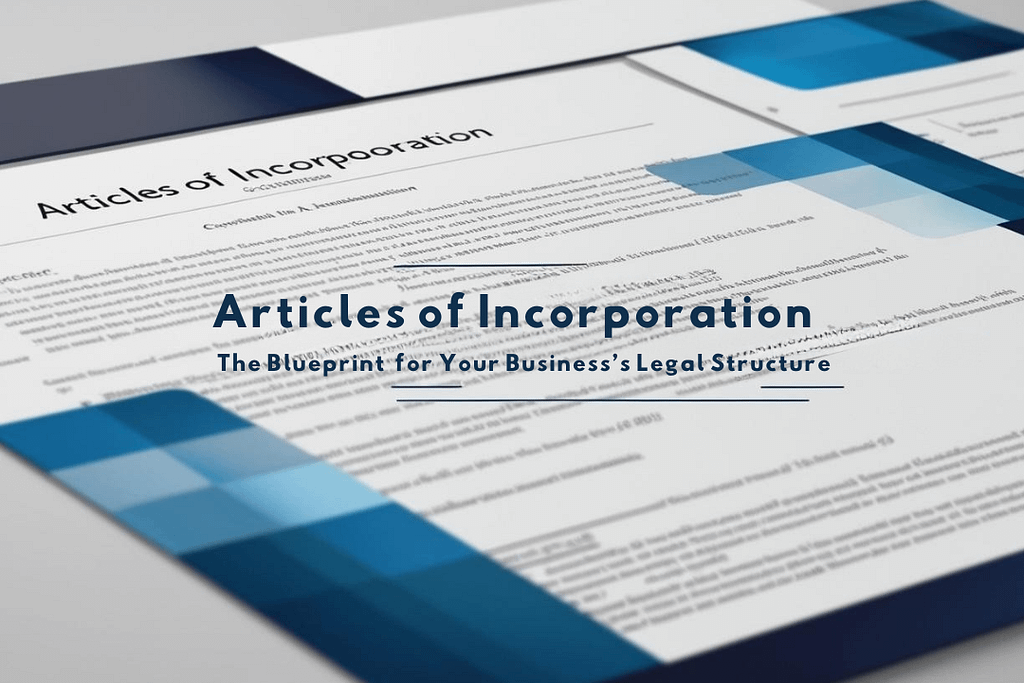In Ontario, an asset purchase agreement for a franchise restaurant is a critical legal contract that facilitates the sale of the business’s specific assets such as equipment, inventory, and goodwill without transferring the seller’s corporate entity or its historical liabilities. This franchise restaurant purchase structure is heavily governed by provincial law, notably the Arthur Wishart Act, which mandates the provision of a franchise disclosure document to the buyer. The entire transaction is conditional upon franchise transfer agreement approval from the franchisor, making the APA’s clauses, especially conditions precedent and representations, paramount. Key distinctions between share purchase and asset purchase in Canada highlight the APA’s advantage of liability protection for the buyer. Given the complexity of buying and selling restaurant franchises in Ontario, engaging a specialized franchise lawyer based in Ontario is non-negotiable to draft a robust franchise asset purchase agreement, conduct due diligence, and navigate the franchisor’s requirements, ensuring a secure and successful acquisition.
Introduction:
The bustling commercial landscape of Ontario is dotted with franchise restaurants, from iconic Tim Hortons and McDonald’s outlets to local favorites like Pizza Pizza and Osmow’s. For many entrepreneurs, buying an existing franchise location represents a proven path to business ownership, complete with brand recognition and an established operating system. For sellers, it represents the culmination of years of hard work and a significant financial exit. However, the pivotal moment where ownership changes hands is governed by a complex and critical legal instrument: the Asset Purchase Agreement (APA).
Far more than a simple bill of sale, an APA acts as the comprehensive blueprint for the deal, meticulously defining the assets, liabilities, and terms of the transfer. In a sector governed by the Arthur Wishart Act, a properly drafted APA is not just a formality but a fundamental business necessity for managing risk.
This guide demystifies this essential contract. We will explore the key sections of an APA, the pivotal role of franchisor approval, and common pitfalls to avoid. Our goal is to provide you with the foundational knowledge needed to navigate this complex process, emphasizing why specialized legal advice is indispensable for protecting your investment and achieving a successful ownership transition in Ontario’s franchise restaurant market.
What is an Asset Purchase Agreement?
At its core, an Asset Purchase Agreement (APA) is a legal contract governing the sale of a business where the buyer acquires specific assets and liabilities from the seller, rather than purchasing the seller’s corporate entity itself. Think of it as buying the pieces of a business; the inventory, equipment, brand name, and lease instead of buying the entire business that contains them. This structure allows the buyer to selectively pick the desirable assets while leaving behind unwanted historical liabilities, such as past tax obligations, unresolved lawsuits, or debt not assumed in the contract.
In the context of a franchise, this definition takes on critical additional layers. A Franchise Restaurant Asset Purchase Agreement [Hereinafter “Franchise APA”] is an agreement designed explicitly for the transfer of a business operating under a franchise model. Its primary purpose remains the transfer of physical assets (ovens, tables, inventory) and intangible assets (the business’s goodwill, phone number, and most importantly, the right to operate the franchise). However, its entire validity is contingent upon a separate, non-negotiable document: the franchise agreement and the franchisor’s formal approval to transfer it. The APA does not itself transfer the franchise rights; it is structured to facilitate a transaction that will only be completed if the franchisor agrees to grant a new franchise agreement or assign the existing one to the buyer.
The Legal Framework in Ontario:
In Ontario, APAs are governed by a combination of common law (judge-made principles from cases) and specific statutes.
- Common Law Principles: The fundamental rules of contract law, offer, acceptance, consideration, and the intention to create legal relations form the bedrock of any APA. Courts will interpret the APA based on the precise language used, applying doctrines like contra proferentem (interpreting ambiguities against the party who drafted the clause) to resolve disputes.
- The Arthur Wishart Act (Franchise Disclosure), 2000: This is the most critical piece of legislation for franchise transactions in Ontario. It mandates that franchisors provide a prospective buyer (the franchisee) with a comprehensive franchise disclosure document (FDD) at least 14 days before any agreement is signed or money changes hands. The representations made in the FDD about the franchise system’s health can directly impact the warranties and disclosures made within the APA itself. A buyer relying on inaccurate FDD information may have recourse against the franchisor under this Act, separate from any claims against the seller under the APA.
Judicial Perspective: Canadian courts frequently handle disputes arising from Franchise APAs, often focusing on the representations and warranties made about the business’s assets and financial state. For instance, in the case of Braidwood v. Ameri-Can Farms (1983) Ltd (2019 ONSC 1083), the court dealt with a dispute over an APA for a farm business, where the buyer alleged misrepresentation regarding the quality and value of the assets purchased. While not a restaurant case, it underscores a universal principle: the specificity of the APA’s asset list and the warranties provided are paramount. The court’s analysis hinges on the contractual terms agreed upon by the parties, highlighting why precise drafting is non-negotiable.
APA vs. Share Purchase: A Critical Distinction: Understanding the Franchise APA requires contrasting it with its alternative: a Share Purchase Agreement. This is the fundamental choice in structuring a business acquisition in Canada.
Also Read: Asset Purchase vs Share Purchase: A Comprehensive Analysis
In case of an APA. the buyer purchases the assets of the business from the corporate owner. The analysis of the same is as follows:
| Buyer’s Advantage | Seller’s Disadvantage |
| Avoids inheriting the corporation’s unknown or unwanted historical liabilities (e.g., lawsuits, tax debts, environmental clean-ups). This “liability shield” is the primary reason APAs are the standard in franchise restaurant sales. | Can lead to “double taxation” for the seller, as the corporation may pay tax on the sale gain, and then shareholders pay tax again when the proceeds are distributed. |
In an SPA, the buyer purchases the shares of the corporation that owns the business. The analysis of the same is as follows:
| Seller’s Advantage | Buyer’s Disadvantage |
| Typically results in a single tax event, as the sale often qualifies for the capital gains exemption for the shareholder. | The buyer steps into the shoes of the corporation, inheriting all its liabilities, known and unknown. This immense risk makes share purchases rare in the franchise context, where buyers are wary of the corporation’s past operations. |
For a franchise restaurant buyer, the asset purchase structure is almost universally preferable, as it provides a cleaner break from the previous owner’s potential legacy issues and aligns with the franchisor’s typical requirement to enter into a new agreement with an approved buyer.
What are the Key Sections of An APA?
In the context of an Ontario franchise restaurant, an APA becomes a highly specialized instrument. It is not merely a sale agreement between two parties; it is a three-way negotiation that is entirely contingent upon the approval and dictates of the franchisor. Its structure is designed to navigate the unique risks and requirements of transferring a branded business operating under a franchise agreement governed by Ontario’s Arthur Wishart Act (Franchise Disclosure), 2000. The following breakdown details the critical components of an APA for a franchise restaurant in Ontario, explaining their purpose and legal significance.
1. Parties and Background:
This section identifies the legal entities involved: the Buyer(s), the Seller (typically the incorporated franchisee company), and often the operating trade name of the restaurant (e.g., “1234567 Ontario Inc. o/a Tim Hortons #1234”). It establishes the “whereas” or “recitals” that provide the context for the agreement, stating that the Seller owns the business and assets and wishes to sell them to the Buyer.
2. Assets Purchased:
This is the heart of the agreement and must be meticulously detailed in the attached schedules. It includes:
- Physical Assets: A comprehensive list of all furniture, fixtures, equipment (FF&E), kitchen appliances, inventory, and supplies. Vague descriptions are a source of post-closing disputes.
- Intangible Assets: Goodwill, the business’s phone number, website domain, social media accounts, and most critically; the assignment of the franchise rights. It is vital to note that the APA itself does not transfer the franchise; it is conditional on the franchisor’s separate approval and execution of a franchise transfer or new franchise agreement with the Buyer.
The specificity required is underscored by cases like Braidwood v. Ameri-Can Farms (1983) Ltd. (2019 ONSC 1083), where disputes over whether specific assets were included caused significant litigation.
3. Liabilities Assumed:
A fundamental advantage of an APA for a Buyer is the ability to cherry-pick liabilities. This section must precisely enumerate the obligations the Buyer agrees to take on, such as: assumed supplier contracts (e.g., with food purveyors or linen services); the obligation to honour outstanding gift card liabilities; specific equipment leases to be assigned. Crucially, any liability not explicitly listed here remains the sole responsibility of the Seller. This protects the Buyer from unknown historical debts, tax liabilities, or lawsuits against the Seller’s corporation.
4. Purchase Price and Allocation:
This clause states the total purchase price and, critically, its allocation among the asset classes (e.g., $X for equipment, $Y for inventory, $Z for goodwill). This allocation is binding for tax purposes under Canada’s Income Tax Act. The Buyer and Seller often have competing interests: the Buyer prefers higher allocations to depreciable assets (like equipment) for future write-offs, while the Seller may prefer an allocation to goodwill, which may be eligible for the capital gains exemption. The Canada Revenue Agency (CRA) will challenge allocations it deems unreasonable, making this a heavily negotiated term that requires accountant involvement.
5. Representations and Warranties:
These are legally enforceable promises and statements of fact made by each party. The Seller’s warranties are paramount for the Buyer and might include:
- That the financial statements are accurate.
- That the Seller has a good title to all assets and they are free of liens.
- That the business is compliant with all health, safety, and employment standards laws.
- That the franchise is in good standing with the franchisor with no outstanding defaults.
If these prove false, the Buyer can sue for breach of contract. The standard for enforcing these clauses is high, as seen in Tercon Contractors Ltd. v. British Columbia (Transportation and Highways), 2010 SCC 4, where the court established a test that first looks at whether the clause, as a matter of interpretation, applies to the breach that occurred. The principle of “buyer beware” generally applies here, a seller in an Ontario restaurant franchise asset purchase has a duty to disclose known latent defects that would render the business unfit for operation, a duty that cannot be circumvented by “as-is” clauses and must be bolstered by robust representations and warranties in the agreement. This was held in the case of 2176693 Ontario Inc. v. Cora Franchise Group [2015 ONSC 93].
6. Covenants:
These clauses govern the actions of the parties between the signing of the APA and the closing date. Key covenants include:
- The Seller will operate the business in the “ordinary course.”
- The Seller will provide the Buyer with access for due diligence.
Both parties will cooperate and use best efforts to obtain franchisor approval and an assignment of the lease from the landlord.
7. Non-Compete:
A non-compete clause is vital for protecting a franchise’s goodwill, but it must be reasonable to be enforceable. An Ontario court will strike down a blanket restriction, requiring instead that the clause be precisely limited in scope and duration to the area immediately surrounding the restaurant, as was held in the case of Martin v. ConCreate USLP Ltd., 2013 ONCA 72. Overly broad clauses are void, leaving the buyer unprotected.
8. Conditions Precedent:
These are the “get-out” clauses that allow either party to terminate the APA if certain conditions are not met by a specified date. For a franchise restaurant, the two most critical conditions are:
- Franchisor Approval: The deal is void if the franchisor, in its sole discretion, does not approve the Buyer as a new franchisee.
- Landlord’s Consent: The deal is void if the landlord refuses to assign the lease to the Buyer.
Other common conditions include the Buyer securing financing and completing satisfactory due diligence. This makes the APA a conditional agreement, protecting both parties from being forced to close a deal that is no longer viable.
9. Entire Agreement Clause:
This clause states that the written APA constitutes the entire agreement between the parties, superseding all prior negotiations, discussions, or verbal understandings. Its purpose is to provide certainty and prevent future disputes by ensuring that the rights and obligations of both parties are solely determined by the four corners of the final, signed document. This was highlighted in the case of Shelanu Inc. v. Print Three Franchising Corp., 2003 CanLII 5215.
10. Indemnification Clause:
This is the APA’s insurance policy. It outlines the process for one party to seek compensation from the other for losses arising from a breach of the agreement (e.g., a violation of a warranty). For instance, if the Buyer discovers a year after closing that the equipment was subject to an undisclosed lien (a breach of warranty), the indemnification clause provides the mechanism for recovering the loss from the Seller. The language must be unequivocal, especially if it is meant to cover losses caused by a party’s own negligence. The clause will specify procedures for making claims, time limits, and often a cap on liability or a deductible (a “basket”).
What is the Franchise Factor in Asset Purchase Agreement?
When buying a franchise restaurant in Ontario, the Franchise APA is just one part of the puzzle. The entire deal is controlled by the franchisor’s rules. The franchisor must approve the new buyer, meaning your APA is conditional and can be canceled if the franchisor says no. The franchisor has the final say. Your APA must include a clause making the deal dependent on this approval. While franchisors must act fairly under Ontario’s franchise law, they have broad power to reject a buyer if they don’t meet specific standards.
Remember, the Franchise APA only covers the physical assets of the restaurant. The right to use the brand name is handled in a separate franchise transfer agreement from the franchisor. This agreement often forces the buyer to sign the franchisor’s latest contract, which may have different and potentially less favorable terms than the seller’s original agreement. This is why reviewing the franchisor’s disclosure document is a critical step.
Buyers must also budget for hidden costs. The franchisor will charge fees for the transfer, require expensive renovations to meet current brand standards, and may mandate training programs. A well-drafted franchise APA will account for this, allowing the buyer to renegotiate or walk away if these extra costs become too high.
What is the Importance of Due Diligence in an Asset Purchase Agreement?
In an Ontario franchise restaurant purchase, due diligence is your homework. It is the process of investigating the business before you are legally bound to buy it. Your findings during this phase can directly change the terms of the Franchise APA or allow you to walk away safely.
Financial due diligence involves assessing the restaurant’s economic health. You must review its sales reports, profit statements, and tax filings. This investigation helps you confirm the asking price is fair. Discover that the sales are lower than claimed. You can use this information to negotiate a lower price in the APA or even cancel the deal under a condition precedent clause.
Franchise due diligence is a unique and critical process. Under Ontario’s Arthur Wishart Act, you have a right to receive a Franchise Disclosure Document (FDD) from the franchisor at least 14 days before signing any agreement. You must carefully review this document and the franchise agreement. Look for any history of disputes, lawsuits, or notices of default against the seller. Discovering a problem here is a major red flag. The APA must be conditional on your approval of the FDD, protecting your right to cancel the deal if the disclosure is inadequate.
Legal due diligence involves reviewing all contracts tied to the business. The most important is the commercial lease. You need to ensure the landlord will agree to transfer it to you. You must also check equipment leases and supplier contracts to understand what obligations you will inherit. These reviews directly affect the “Liabilities Assumed” section of the APA, ensuring you only take on the debts you agree to.
Finally, physical due diligence is a hands-on inspection. You need to check the condition of all equipment, the building itself, and ensure everything meets health and safety codes. Suppose you find the ovens are broken or the roof needs repair. In that case, you can demand the seller fix them before closing or, again, negotiate a price reduction in the APA. This step ensures the assets you are buying are actually in working order.
What are The Common Mistakes to Avoid in A Franchise APA?
Certain mistakes might cause the entire deal to blow off due to their critical nature and create complex problems in the future, the most important ones that must be avoided are listed as follows:
- Missing Franchisor Condition: Never sign a binding Franchise APA without a condition making the deal contingent on the franchisor’s formal approval. Without it, a rejected application could leave you in breach of contract.
- Vague Asset Lists: Avoid generic descriptions like “all equipment.” Use a detailed, itemized schedule. Unlisted assets can be legally removed by the seller, leading to disputes.
- Incorrect Price Allocation: The purchase price must be allocated realistically to asset classes (equipment, goodwill). An unreasonable allocation will be challenged by the Canada Revenue Agency, creating tax problems for both parties.
- Ignoring the Lease: The deal must be conditional on the landlord consenting to assign the lease to the buyer. If the landlord refuses, the buyer cannot operate the business.
- Unenforceable Clauses: Courts will void clauses that attempt to waive core rights under the Arthur Wishart Act (e.g., the right to a disclosure document) or that impose an overly broad non-competition clause on the seller.
- Unplanned Franchisor Mandates: The APA must address potential franchisor requirements, like costly renovations. The buyer needs a contractual right to renegotiate or withdraw if these unexpected costs exceed an agreed-upon limit.
Why is a Lawyer Non-Negotiable for Your Franchise APA?
A well-drafted Franchise Asset Purchase Agreement (APA) serves as the foundational shield for a buyer, protecting against historical liabilities and providing certainty, while ensuring a seller a clean break and secured payment. However, this requires an expert architect: a franchise lawyer is critical to navigate beyond generic templates and address Ontario’s Arthur Wishart Act. Their role extends to negotiating vital warranties, crafting indemnification clauses, and decoding complex franchisor documents, providing essential risk management that protects your investment. The minimal cost of specialized legal advice is insignificant compared to the potential devastation of a single error in a high-value transaction, ensuring your deal is built on solid legal ground.
At Pacific Legal, we assist clients with the preparation and negotiation of Asset Purchase Agreements by reviewing transaction specifics, drafting clear contractual terms, and helping to structure deals to manage risk. Our approach focuses on providing practical legal advice to support our clients’ business objectives during the acquisition or sale of a franchise restaurant.
How to Draft a Proper Franchise APA?
Drafting a Franchise APA begins with a non-binding Letter of Intent to outline the main deal points. Next, the buyer hires a lawyer and accountant to guide the process. The buyer then thoroughly investigates the business’s finances, legal standing, and physical assets. Based on these findings, the buyer’s lawyer prepares the first draft of the APA. The parties then negotiate the terms through their lawyers. Once agreed, the buyer must meet critical conditions, such as obtaining formal approval from the franchisor and the landlord. Finally, the deal closes when all documents are signed, and funds are transferred, completing the sale.
Conclusion:
In conclusion, navigating the sale or purchase of a franchise restaurant in Ontario is a complex process where the Asset Purchase Agreement serves as the critical roadmap. A well-drafted APA, meticulously tailored to address the unique three-way dynamic between buyer, seller, and franchisor, is essential for managing risk. Its effectiveness hinges on a thorough understanding of key clauses, a rigorous due diligence process, and strict compliance with Ontario’s franchise laws. Ultimately, while the commercial terms are vital, securing expert legal guidance to draft and negotiate this agreement is the most crucial step in protecting your investment and ensuring a successful transition of ownership.
Prefer to talk now? Call us at +1-(416) 688-5567 or contact us online for a quick case review.









